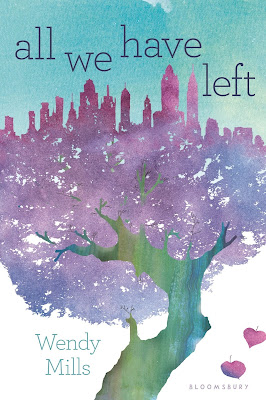Stories are magical, for both the young and old. Here you can find book reviews for specific age groups, topics, or learning experiences. There are also booklists and lesson ideas for educators, librarians, and families.
Search This Blog
Thursday, September 16, 2021
24 books to teach RESPONSIBILITY for elementary/middle readers
Sunday, September 12, 2021
Angel of Greewood: romance set in a tragedy
Saturday, September 11, 2021
Remembering 9/11 through stories
On this anniversary of 9/11, I find myself talking with young people about what they know about that day. Some know a lot of facts based on what they have learned from their families and teachers. This is when historical fiction novels and picture books about the event can help everyone learn more about the people who were affected by the events of that day. Below I highlight my top picks for books for elementary and middle school readers who want to put people's stories with the facts of that day and beyond:
Sunday, September 5, 2021
Black Boy Joy: a middle grades anthology
The Mushroom Fan Club: putting the FUN in Fungi!
Gravel takes the reader along with her and her daughter as they venture into the woods looking for some mushrooms. She adds diagrams that help readers learn the names of the parts of the mushrooms and differentiates among popular types they have encountered on their hunts.
The best part is that Gravel brings personality to the mushrooms so readers can remember the information, connect with it and share what they've learned with others. I am going to use this book with my kindergarten - 2nd grade classes when we are working on the difference between fiction and nonfiction. I've used her book, The Fly, for this learning objective before and the students love to listen to the facts about flies, which they see everyday.
The Mushroom Fan Club offers many opportunities for interactive listening and follow-up activities. My favorite parts of the book are that there are actions that readers can do along with the mushrooms. For example, Gravel's daughter stomps on puffballs to help spread their spores for reproduction, so readers can act out stomping, just like her daughter.
There are also species of mushrooms that Gravel does not get to describe, she leaves only the attention-grabbing names. Readers can choose one to research, illustrate and share a fact with the community. Or they can draw what they think the mushroom would look like based on the clues in the name and then they can look up the actual one to see how close they were!
Readers can, of course, walk outside and look for mushrooms as a follow-up and document what they have found. They can learn about what mushrooms grow in their area. We are lucky in our town to have a mushroom hunting club and at our farmers' market, many mushroom growers who are happy to share their knowledge about mushrooms.
Finally, Gravel adds instructions on how to do a spore print which is perfect for a classroom art activity. All you need are mushrooms, paper and a glass or bowl.
I'm looking forward to reading this book with my students and encouraging them to get outside to look for mushrooms. I'm incredibly impressed with anything that Gravel has written so I feel lucky to have found this copy nearby! It's a must-have for school libraries, science classrooms and home libraries.
Recommended Reads of 2025
Each year I make a conscious effort to read more books, especially in a particular genre or format. The range of books that I enjoyed this ...

-
During the 2018 Winter Olympics I was the school library media specialist at a middle school. I was looking for a way to drive more student...
-
Categories : roll the dice or draw a card with a color and the student picks a square from that row and teams can come up with examples, pa...
-
September 15 - October 15 is Hispanic Heritage Month and although we need to share Latinx voices all year round, this is the month that we...
-
"How do you decide to what to read next?" This is a common question I get asked by my students, colleagues, even friends and fam...
-
Our students want stories that encompass various people's perspectives. PRIDE month offers the chance to spotlight LGBTQIA+ people ...
-
Bibliotherapy is defined as " the use of literature to help people cope with emotional problems, mental illness, or changes in their l...
-
As the school year winds down students want to continue to build memories with their teachers and classmates. A shared read can provide t...
-
The Sea in Winter written by Christine Day is a middle grades novel that appeals to those who have been disconnected from their life pur...
-
I didn't envision my first blog post of 2022 being in honor of someone who has passed away , but here we are. The world lost an artist ...
-
The new school year is upon us and books are the greatest way to learn about students, build relationships and discuss characters, storyli...

.jpg)
.jpg)
.jpg)
.jpg)













.jpg)
.jpg)



